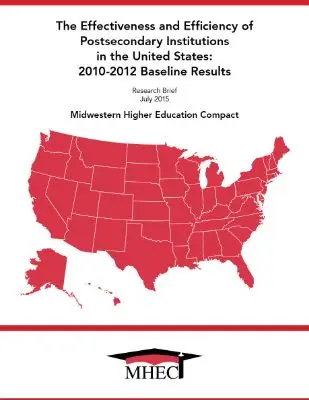The Effectiveness and Efficiency of Postsecondary Institutions in the United States: 2010-2012 Baseline Results
State policymakers are increasingly interested in identifying and rewarding postsecondary institutions that effectively and efficiently promote timely degree completion. Among the more commonly used performance indicators in this endeavor are graduation rates and degrees produced per expenditure or revenue. Graduation rates in particular have been widely adopted as indicators of institutional effectiveness in state and national accountability measures, accreditation regulations, and institutional performance reports. However, numerous factors that frequently lie beyond institutional control strongly influence degree completion, such as the socioeconomic status and academic preparedness of incoming students. Moreover, educational expenditures can vary tremendously according to the types of degrees produced (e.g., certificates, bachelor’s degrees, doctoral degrees) and the disciplines represented.
Raw graduation rates and expenditures per credential may thus better reflect differences in such factors as admissions selectivity or institutional mission than whether institutional practices and programs are in fact conducive to student success. This problem was recently addressed in two MHEC working papers that developed adjusted measures of effectiveness and efficiency in promoting timely degree completion (see Horn, 2015a, 2015b).
The purpose of this research brief is to summarize the methodology and findings of the working papers. Highly effective colleges and universities are then identified within each state.

